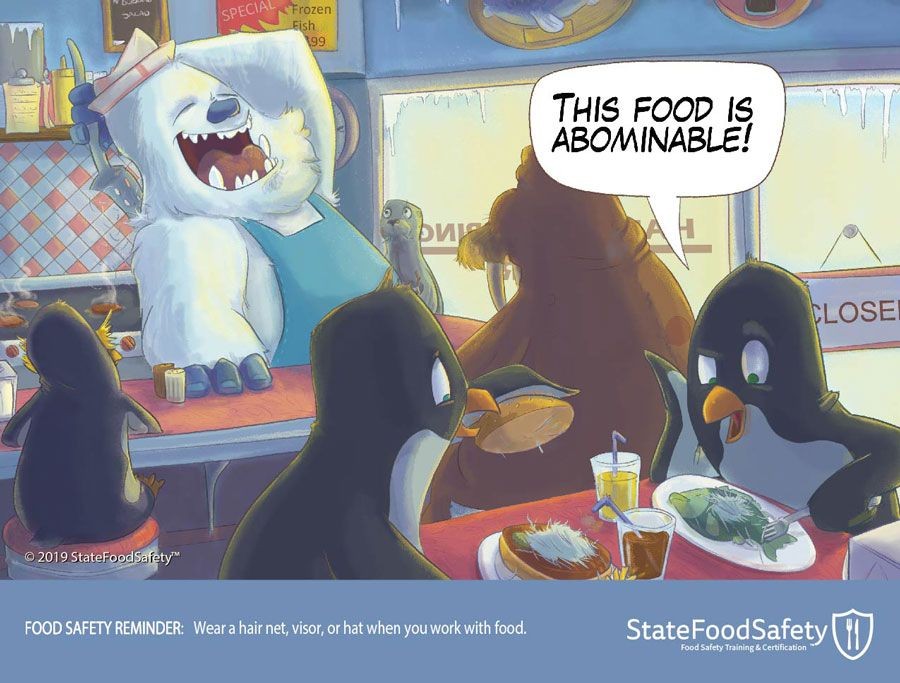Hair in food is more than just unappetizing; it’s a potential health hazard. Ensuring proper hair restraint is crucial for maintaining food safety standards. This guide provides comprehensive insights into how food handlers can effectively restrain long hair to prevent contamination and uphold hygiene in food preparation environments.
Wearing proper hair restraints might seem like a minor detail, but it’s a crucial step in preventing foodborne illnesses and customer dissatisfaction. Let’s explore the best practices for keeping hair out of food.
Why Restraining Hair is Essential in Food Handling
Preventing Physical and Biological Contamination
Hair poses both a physical and biological threat to food safety. As a physical hazard, loose strands can cause choking or injury. More significantly, hair can harbor pathogens like Staphylococcus bacteria, leading to foodborne illnesses.
Even though these pathogens are commonly found on skin and hair, keeping them out of food is vital. Using appropriate attire such as gloves and effective hair restraints minimizes the risk of contamination.
Acceptable Hair Restraints for Food Handlers
According to guidelines like the FDA Food Code, suitable hair restraints include hair nets, baseball caps, and hats. The main objective is to contain loose hair, preventing it from falling into food or onto equipment. These restraints also discourage handlers from touching their hair, which reduces hand contamination.
Various types of hair nets and caps can be used. Disposable options should be discarded after each use or if damaged. Maintaining these restraints in good condition is crucial for effective food safety. Always consult local health departments for specific requirements.
Addressing Facial Hair in Food Safety
Facial hair also needs to be covered to prevent contamination. Beard nets or other restraints should be used to cover beards, mustaches, and goatees. Check with your local health department to ensure your facial hair restraints meet standards.
Hair Restraints for Servers: What’s Recommended?
While the FDA Food Code doesn’t mandate hair restraints for servers, those with longer hair should still tie it back in a ponytail or bun. This precaution helps keep hair out of the food being served.
Handling Accidental Hair Contact with Food
If hair accidentally touches or falls into food, the affected food must be discarded immediately. Thoroughly clean and sanitize all equipment and start the preparation process again. Due to the potential biological hazards, it’s crucial to wash hands and sanitize the workspace.
Servers should follow the same protocol: if hair touches or falls into a dish, request a new one. Handwashing should also be performed before resuming service.
Touching Hair During Food Preparation: A Risk
Accidentally touching your hair while preparing food requires immediate handwashing and glove changes. Even a brief scratch or touch can contaminate your hands, highlighting the need for strict hygiene.
The same principle applies to servers: wash hands immediately after touching hair to prevent contamination of plates and utensils.
If hair escapes from a restraint, it should be fixed immediately, preferably away from food and equipment. Always wash hands after adjusting the restraint.
Conclusion: Key Practices for Hair Restraint in Food Handling
Adhering to these guidelines will help protect both food handlers and customers from physical and biological hazards. Always wear appropriate hair restraints such as hair nets, caps, or visors. Ensure facial hair is covered. If you touch your hair, wash your hands and change gloves. Servers should keep long hair tied back and be vigilant about stray hairs.
By following these practices, food service establishments can maintain high standards of hygiene and food safety.

